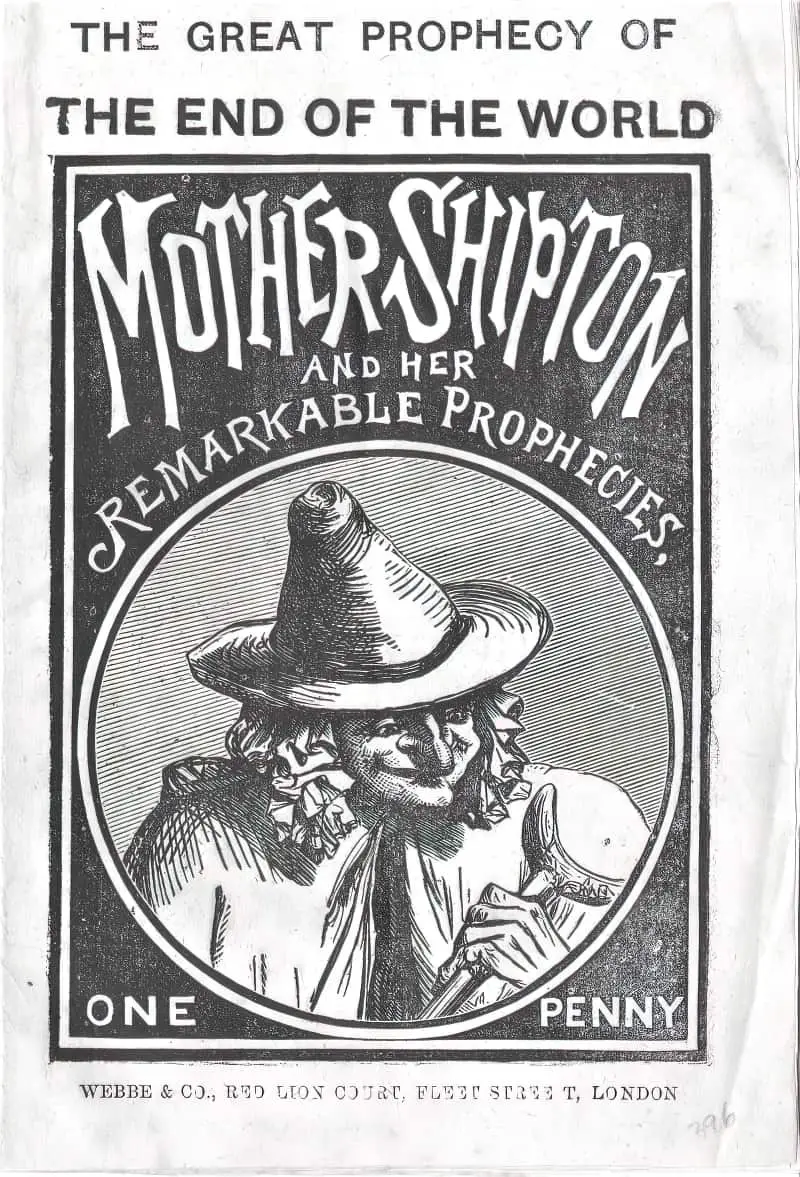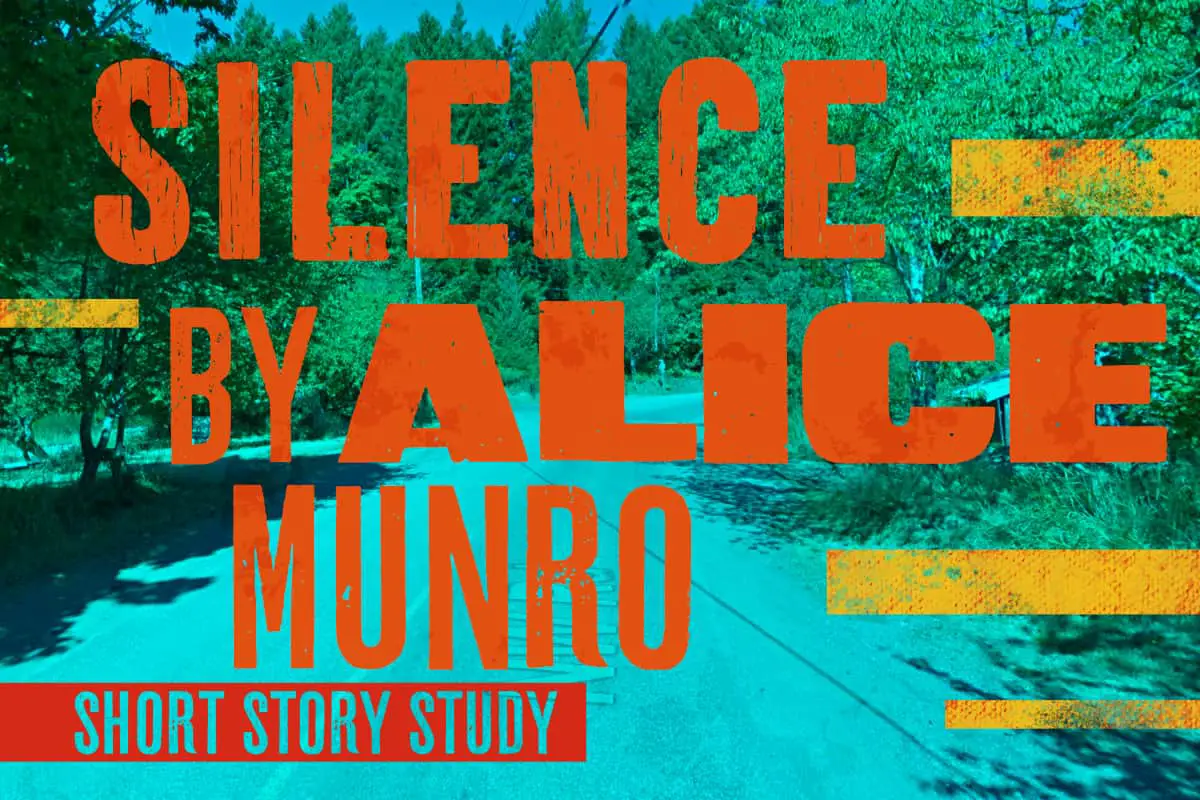“Silence” is a short story by Alice Munro, one of three in a triptych about a woman called Juliet. The first are “Chance” and “Soon“. All three are published in the Runaway collection (2004).
[“Silence”] brings to the foreground a theme that runs through many stories by Alice Munro—the role of silence within the network of domestic relations.
Corinne Bigot

Read “Silence” online at The New Yorker.
Structurally, “Silence” is a mythic journey which spans approximately half of a woman’s entire life. The story opens with Juliet off on a trip in order to find information. Along the way she meets allies, opponents (most characters are a mixture of both), then returns ‘home’ a changed person after solving part of the mystery and learning something important about herself.
Usually when I break down a story into classic structure, there’s a fairly clear line between each step. One masterful thing about the work of Alice Munro: lines are not there. “Silence” makes an excellent case study of a short story in which the ‘Anagnorisis’ phase melts in to the ‘New Situation’ stage. The reader keeps having revelation after revelation, then bang, there’s the big gut punch, right at the end.
SETTING OF “SILENCE”
After a short note for the first time in six months, Juliet is off to see Penelope. The arena of this mythic journey includes:
- Buckley Bay (British Columbia)
- Denman Island (British Columbia). See also The Symbolism of Islands.
- A symbolic ferry (See also: “The Voyage” by Katherine Mansfield)
In the opening scene, the main protagonist, Juliet, is on a ferry, crossing over to Denman Island to meet her daughter who has been spending six months on a retreat there. The crossing clearly signals a passage: Juliet will find Penelope gone, and this will change her life for ever.
Corinne Bigot
- The story opens in summer. (See also The Symbolism of Seasons.)
- Later there’s a severe storm which kills her husband while he’s out at his fishing job. Munro is careful to vary the weather when describing scenes which span a lifetime, which not only marks her life stages into different parts for the reader but also works symbolically, because life is full of ups and downs.
- Spiritual Balance Centre, a retreat reminiscent of a church and a hospital both at once, where people stay for months at a time. The retreat is an old church covered with stucco. There’s another shabby building with a slanting roof. Munro is expert at describing those very ordinary buildings we see often but rarely stop to notice.
- The woods. Junipers and poplars. (See also: Symbolism of The Forest in Storytelling.)
- Juliet’s city apartment, which feels like a prison once she’s surrounded by memories of Penelope, but no Penelope.
- The apartment juxtaposes against Heather’s large, luxury mansion.
The Aethiopica opens onto and leads us into another space, into the world of literature and myth, reversing the movement from open space to enclosed space on the diegetic level—from the house in Whale Bay to increasingly smaller flats to a basement flat.
Corinne Bigot
- Her old friend Christa lives in Whale Bay, Kitsilano, in an assisted living facility due to multiple sclerosis. While Kitsilano is a real place, not sure about Whale Bay. I believe the area is well-known for whales, if the bronze statue of the killer whale outside the Granville Island aquarium is anything to go by. At the living facility, wisteria conceals the garbage bins — a beautifully succinct and telling detail which shows the reader this place is comfortable on the outside, but hides less pleasant things beneath. (Wisteria is often used—actually and symbolically—to create the feel of a suburban idyll. Desperate Housewives uses this symbolism to the max—the setting is Wisteria Lane.)
- Penelope is revealed to have relocated about as far north as humanly possible. See also: The Symbolism of Cardinal Direction.

TECHNIQUES OF NOTE IN “SILENCE”
Meta commentary on dramatic irony
“I feel stupid. That woman intended me to feel stupid, of course. Like the character who blurts put something in a play and everybody turns away because they all know something she doesn’t know—”
“They don’t do that kind of play anymore,” Christa said. “Now nobody knows anything.”
Munro is avoiding dramatic irony in this story, and tells us so. We know nothing more than Juliet herself; we also don’t know if Juliet is a reliable narrator. (I conclude she is not—at the very least, we need Penelope’s point of view, which we don’t get.)
Though they may close with the sleepy loose ends of secrets and dreams, these stories, like life as it is recalled more than as it is lived, move forward with speed and excitement: there are train, boat, and car wrecks; weddings and affairs; the ever present whiff of suicide. They are determinedly full of the marks of change—cultural and emotional—upon individuals who are as startled by them as any reader.
The Atlantic
DETAIL CHOSEN FOR REALISM
Munro’s tone can be bracingly dry. She has no time for those implausible feats of memory often enacted by fictional protagonists; she simply tells us, with unhesitating naturalness, about her characters’ early lives, including many things which they themselves will later remember differently, if at all.
The Guardian
In short, if you want your story to feel realistic, don’t give your characters really good memories for ancient details—even if you’re writing with a third person narrator. It will seem like subtle authorial intrusion—a fakery.
A USE FOR TELLING NOT SHOWING
It is revealed, but not until after the fact, that Juliet lost her composure in her scene with Joan. She doesn’t tell Christa this either. But now we, the audience, know. First of all, this may lead us to doubt Juliet’s ability to tell the truth of a situation. (Hints of an unreliable narrator.) If Juliet’s close third person narrator can withhold telling us things as they happen, only ‘casually’ mentioning them later, there may be things we’re not told at all. (Note how I put ‘casually’ in inverted commas, because nothing in Munro’s writing is there by accident.) Rather, the reader is given the impression of accidental revelation. Munro does this by detailing a scene, but leaving an important part out, telling it later (rather than showing), as part of subsequent narration.
FURTHER HINTS OF UNRELIABLE NARRATION
Sometimes, all you really need to do as writer is include two contradictory things. The real challenge is subtlety.
[Juliet] insists on Penelope’s compassionate if not angelic nature: “she has grace and compassion […] She is also angelically pretty” Yet the silent speech simultaneously undermines the contentions it puts forward, giving the lie to this vision of Penelope.
Corinne Bigot
Speaking of subtle, Munro is making use of allusion, as well, to tell us we’re listening to an unreliable narrator:
A comparison with a caryatid (“Molded, I should say, like a caryatid”) apparently aims at stressing Penelope’s classic beauty; yet the association with a marble or stone pillar also suggests there is something hard in her nature. Since the word “caryatid” comes from the Greek Karuatis, a priestess of Karyae, a temple dedicated to Artemis, the comparison also indirectly links Penelope to Artemis, a rather revengeful goddess according to Greek mythology where she kills Acteon and Adonis for revenge. The simile, therefore, foreshadows Penelope’s metamorphosis into a hard, implacable maiden who will strike her mother by proxy.
Corinne Bigot
STORY WITHIN A STORY
Juliet immerses herself in ‘the Greeks’. She’s filling her life with personal interests as a coping strategy. The narrator summarises a romance called Aethiopica (also known as “The Ethiopian Story”). Munro is now using story within a story technique (metadiegetic narration). In some ways this myth reflects Juliet’s own life, but not exactly — not in a way that draws away from the realism Munro has created.
The ‘stage’ metaphor is also a kind of story within a story:
Following the map, Juliet will come to what is, literally, a stage—“found herself parked in front of an old church […] a simple stage”—and then, by assimilation, a hospital ward: “private cubicles, as in a hospital ward”. On this stage and in this hospital ward, Juliet meets the woman who will engage her in a big struggle, using Penelope’s absence and her own reticence as weapons with which to fight her.
[…]
During the ceremony of burning Eric’s body on the beach, Ailo is said to be playing the “role of Widow of the Sea”; and Juliet thinks of Eric’s death and the burning of his body as being “like a pageant she had been compelled to watch”. The comparison with a pageant turns Eric’s death into a play and a tableau. The nominal phrases—“the storm, the recovery of the body, the burning on the beach”—make the description read as possible titles for tableaux, and freeze the scenes into tableaux, as if Eric’s death was being etched on her memory. The whole scene then grafts Eric’s death onto a literary myth since looking at the pyre, Juliet thinks of the burning of Shelley’s body.
Corinne Bigot
CHANGE IN EMOTIONAL VALENCE
By the end of the [scene between Juliet and Joan], the “striking-looking woman” of the first page will have become a stricken woman who walks away in tears, having been defeated by Joan’s final silence
Corinne Bigot
SURPRISING REVEALS
Munro tells us about marriage problems. But Juliet and Eric did not divorce over these problems. He went missing at sea in a storm.
WEATHER AND PATHETIC FALLACY
Munro delves into the psychology of infidelity and the effect it has on a marriage, focusing on the ups and downs. The magnificent love making fuelled by grief, then the next moment they’re plunged back into misery.
The morning after the storm is clear and calm. This is an example of pathetic fallacy. Stormy then calm describes their marriage over the past twelve years. Either way, she lost her husband in the “storm”, metaphorical or real. Because his body is not recovered until the third day, Juliet imagines he may still be alive.
STORY STRUCTURE OF “SILENCE”
The way Alice Munro works with time in her stories reminds me of this winter solstice gif:
Decades collide, intersect, are placed side by side in a charged and vibrating conversation. (Munro has said she sees stories architecturally, as a house whose various rooms one can roam in and out of, forgoing any prescribed order; this surely accounts for the nonlinear aspect of so many of her narratives. That memory and passion re-order a life and cause events to fall meaningfully out of sequence in the mind often seems to be Munro’s point.)
The Atlantic
“Silence” is an excellent example of this in-and-out treatment of temporality, though compared to the rest of her work, it is unusually chronological. She tends to start in one place, shifts back, returns to the present then forward. Munro is a magician with time. But what gives me that feeling? Especially when:
The story has a very linear, chronological structure, with the exception of one flashback to the death of Eric, Penelope’s father, some ten pages into the narrative.
Corinne Bigot
(A linear plot shape is typical of a mythic structure.) Munro has reversed the gender role in the most classic myth of them all:
Penelope is not she-who-waits as she was in the traditional myths.
Here, Penelope travels like Odysseus, leaving loved ones behind, in Juliet’s case, waiting and wondering, though not weaving.
Buried In Print
To underscore the theme of silence (what is not said) in this story, Munro is making much use of the technique of side-shadowing, in which a character considers doing things, then doesn’t, or in which the narrator makes a conjecture about what could have been, but wasn’t.
SHORTCOMING
The main character is Juliet. When “Silence” opens, she appears regularly on the provincial channel as an interviewer on Issues of the Day. This is Juliet in the prime of her life, though Munro will soon show us that this successful woman’s life is not so successful when you scratch the surface. And she’s on a downward trajectory.
Notice how Munro makes use of the language of violence. Juliet is a ‘striking’ looking woman.
Inciting Incident: Once inside the retreat, Juliet learns her daughter is not here. Joan sounds ominous, as if Penelope has died.
DESIRE
Munro has given Juliet a very strong desire line — she wants to reconnect with her daughter. Later, she downgrades her desire, and only wants to know she’s doing okay. Once she’s achieved this much, the story is over. (If you’re wondering where to end your own short story, the story ends pretty soon after your main character either gets what they wanted or not.)
OPPONENTS AND ALLIES
Twenty-year-old daughter called Penelope who Juliet misses terribly is the absent, out-of-the-frame opponent. If only Penelope had told Juliet why she had cut ties, this might help Juliet out. Note that this is also a mystery story. It is not mystery ‘genre’, because there’s not a through-line of investigation:
There isn’t really any investigation element in the story, so don’t go into this thinking that there will be a mystery to solve.
Short Story Addict
The mystery is: What happened to Penelope, and why won’t she talk to her mother? We might consider mystery and opposition one and the same, introduced at the same point, functioning for the audience in the same way.
One of the things Munro seems a total master of is the ability to tell us a great deal about her characters while still leaving their central human mystery intact.
The Reading Life
But because Penelope is not available as an on-the-page sparring partner, Juliet turns Joan into a bigger opponent than she really is. Joan is the maternal figure of the retreat, sycophantic and insulting at once. This admixture of traits makes her a great fictional character. Juliet responds to her by slipping into interviewer mode, treating this woman as her subject, but failing to make her usual good job of it, because of her closeness to the subject.
It is revealed that the character of Joan easily fits into this role, because of someone Juliet used to know. Joan reminded her of that person. (The character of Ailo is the white haired opponent of their marriage, and I deduce Juliet has imbued Joan with many of the same evil qualities.)
Joan’s moniker changes over the course of the story, as Juliet learns to think of her differently—first fully culpable, later just an annoyance. (Pope Joan, then Mother Shipton—an English soothsayer and prophetess. Quite who Mother Shipton was or what exactly she said is not definitively known. )

In the most interesting stories, especially realistic ones, characters are opponents and allies at once, or they take it in shifts over years.
Christa is a sometime ally, sometime opponent. Christa reassures Juliet and encourages patience — she is a fairytale mentor. To complicate matters, Christa slept with Juliet’s husband before Juliet was with him, then didn’t tell Juliet about that later. In the hands of a lesser writer, this information would have come off as soap-opera-salacious, but in a nuanced story like this, the reader is encouraged to wonder if Juliet should have been told, or if Christa and the husband were right to withhold it. How much of your partner’s former sex life is your business? Are the rules different for your female friends?
PLAN
‘Coping’ might be a better word than ‘planning’, because what can a parent do when their child goes missing?
- Juliet always checks her answer machine as soon as she gets in.
- She puts her daughter’s things in the bedroom.
- Eventually she moves apartments, and puts Penelope’s things in storage. In other words, she’s compartmentalising. If she doesn’t see Penelope’s things, she’ll be able to cope with the loss.
- Eventually she will become so good at compartmentalising that she doesn’t talk about Penelope, even with her new partner.
- Heather gives Juliet some information about Penelope. Part of Juliet would love to be the crazy woman she imagines — when she finds out approximately where her daughter is living, she’d love to track her down. She’d have to do it in an underhand, stalkerish kind of way, but she is above that. So she does not. This plan plays out only in our main character’s mind — a type of literary side-shadowing.
- Juliet’s continued plan is to keep compartmentalising, thinking of Penelope only occasionally, living a simple life in the best way she can.
BIG STRUGGLE
The Battle scene comes right before the Anagnorisis sequence, which makes it the conversation with Heather.
Heather tells Juliet she ran into Penelope in Edmonton. She doesn’t appear to know Penelope and Juliet are estranged. (Or, about ‘The breach’ as Juliet thinks of it.) Heather reveals that Penelope loves way up north and has five children.
The battle is not with Heather as such, but the tousle between what Juliet thought must have happened to her daughter versus what really has happened. The climax is the discombobulation of finding out by surprise, and the self-imposed requirement she keep up appearances to Heather.
ANAGNORISIS
First comes the plot revelation about the mystery of Penelope. (These are probably called ‘reveals’ to distinguish them from character ‘revelations’.) Juliet never gets the full story, but enough to satisfy, and it must be enough to satisfy us, as reader. If we want more, well, so does Juliet. We empathise.
Juliet processes Heather’s snippets of information and realises the life she has imagined for her daughter must be completely wrong. Not a spartan life but a wealthy one.
This leads to her anagnorisis.
Munro is a world leader in the art of the short story. One of the things which makes her so: The anagnorises of her characters are remarkably complex. Be careful not to turn that sentence inside out: I’m not saying a simple anagnorisis indicates a simple, unworthy story. But if you’ve pulled off a complex one, you know you’ve written a complex story, and one which is probably highly original. Anyway, here it is:
The fact was surely that she had laughed too much around Penelope. Too many things had been jokes. Just as too many things—personal things, loves that were maybe just gratification—had been tragedies. She had been lacking in motherly inhibition and propriety and self-control.
I’m starting to notice that in the best short stories the Anagnorisis phase can be broken down into three clear parts:
- In a mystery set up, the mystery is solved and the main character learns the truth of their situation. This is more of a PLOT revelation than a SELF revelation, but is the first phase of understanding something big about themselves.
- The anagnorisis comes after. They, or the narrator, will spend maybe a paragraph (as demonstrated above) telling the reader what they know about their own psychology now (and did not know before). Or, in a tragedy, the narrator fails to take any lesson away from their experience and/or comes to a completely wrong conclusion. They could sit anywhere on the ‘insight’ continuum — they might get half of it, a bit of it, most of it.
- If the character does not have a ‘full’ realisation, that shortfall is completely wasted unless the reader understands how much they could have learned. So after the character/narrator offers their part, there’s often a bit that comes afterwards in which the reader is encouraged to know even more than the character does about their situation. This tends to be done in penultimate scenes. In the case of “Silence”, we’re told that Juliet partners up with Gary, Christa’s brother. Here’s my revelation, which Juliet may not have grasped herself: Is this her subconscious’ way of getting even with Christa for sleeping with her husband? Further revelation: This relationship is doomed. Juliet never tells him she even has a daughter. Christa May have told him but Gary never mentions her. (What do you think? Did you have the same thoughts as I did?)
In these stories, as in so many of Ms. Munro’s fictions, people’s lives change abruptly: sometimes by spontaneous choice, sometimes by calculated risk, sometimes by accident — by illness, bad luck or someone else’s carelessness or malice. Indeed, this is a theme sounded again and again in her work: that life is precarious, that flux is a given, that certainty will always be elusive. Some of her characters find this realization frightening: it leaves them with a kind of emotional vertigo, the fear that their lives could crack apart at any moment. But others find this realization oddly liberating: the knowledge that things can fall apart also means that change is possible, that new opportunities to reappraise, maybe even reinvent, their lives may lie down the road.
The New York Times
Juliet belongs to the second category of anagnorisis.
NEW SITUATION
The New Situation phase overlaps with the ‘Reader Revelation’ phase. Munro’s final sequence is doing double duty, which is truly masterful. The double duty is this: We learn that Juliet ends up alone. We also learn that if only Juliet had been able to talk to Gary honestly (and to everyone else honestly — including to Penelope, no doubt), her life could have been completely different.
As it is, Juliet remains unable to talk to Gary about this huge chunk of her life, so she breaks up with him. Munro again uses the technique of side-shadowing by giving us the conversation they should have had—the one which would have allowed them to stay together.
Two silent speeches feature prominently in “Silence”. The first speech occurs while Juliet is speaking to a woman on the ferry to Denman Island. They are the words she “could have said” about Penelope and their relationship; its very presence foretells Juliet’s later silences. It is echoed by a second silent speech, the words Juliet “might have said” if she had been able to speak about Penelope to Gary. It reinforces the vision of a woman whose secret forces her to resort to silently speaking in her head. Italics suggest that these are not so much silent speeches as “silenced” ones—the words that Juliet cannot say aloud. They remind us that Juliet is denied the possibility of speaking to and about her daughter, they suggest that she has been “silenced” by Penelope’s silence.
Corinne Bigot
This is such a sad, poignant few paragraphs, because we realise (note—reader revelation) that sometimes the difference between a relationship and a permanent estrangement is the difference between having a very short conversation and not having it.
Juliet is eventually left with Larry, as a friend, not as a lover. She views him as asexual (with the subtext that he’s probably gay but doesn’t talk about it). He is a lot of fun, but in any case, he is also someone who lives on the fringes, living with his own silences.
At the end of the story, Juliet is a little short of money and, unable to retire, works at a cafe while studying the Greeks. In this way she finds her own happiness. Despite this, there is no real emotional closure for Juliet:
The reader is also refused closure, just as the characters of “Silence” are. Eric dies in the middle of their quarrel, leaving matters unresolved. Death has silenced the quarrel, but has prevented its resolution, foreclosing forgiveness and reconciliation. Since Juliet is refused confrontation with her daughter, since nothing is said about their feelings, both mother and daughter are refused closure—the possibility to let go of their grief or anger. The final paragraph simultaneously offers hope and, with the word “remission”, reminds us that Juliet does not emerge unscathed.
Corinne Bigot
COMPARE AND CONTRAST

The backstory of Juliet and Eric reminds me of another of Munro’s short stories, “The Bear Came Over The Mountain”. In both stories, old infidelities still hurt, even though one of the involved party is living in an assisted living facility, and we might expect time to have healed, considering. (Ester Perel is fond of saying that time does not heal you—it’s what happens inside the time “Time never exists on its own. It’s what happens in it. You have to give it meaning. You have to shape it.”)
“Deep Holes” is another short story in which Munro explores parent/child estrangement — this time between mother and son.
“Silence, it appears, is not the opposite of sound. It is another world altogether, literally offering a deeper level of thought, a journey to the bedrock of the self.”
Michael Finkel, The Stranger in the Woods: The Extraordinary Story of the Last True Hermit

